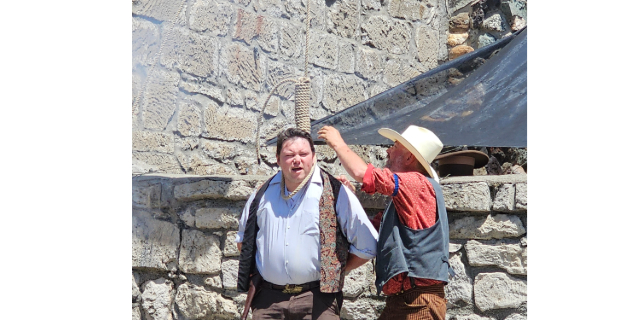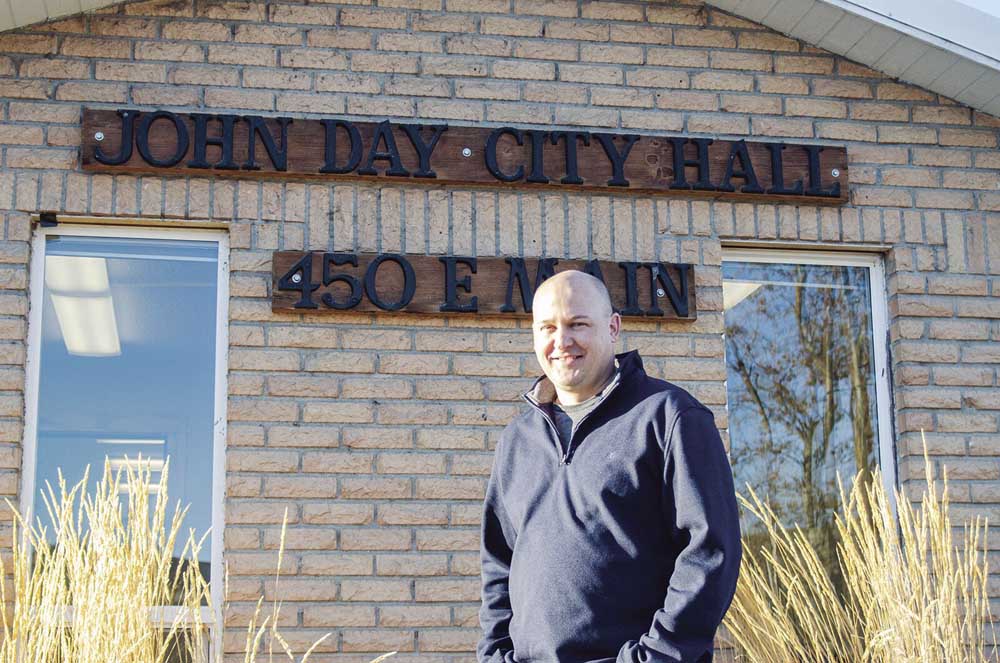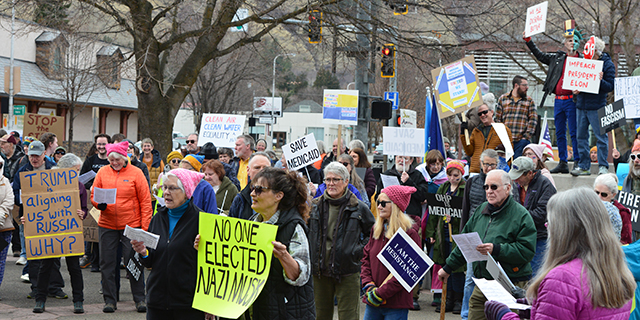Hangings and history
Published 1:20 pm Tuesday, June 17, 2025

- Whiskey Gulch Gang President Colby Farrell, right, places a noose around the neck of Clayton Vibert at the '62 Days mock hanging on June 14, 2025, in Canyon City. (Justin Davis/Blue Mountain Eagle)
’62 Days mock hanging is a unique Grant County tradition dating back to the 1970s
CANYON CITY — A crowd slowly began to gather June 14 near the historic Sels Brewery on Washington Street in Canyon City.
It was 2 p.m., and everyone was waiting to catch a glimpse of the ’62 Days Celebration’s main attraction — the mock hanging.
The spectacle began with gunshots, then lawmen chased the bolting shooter through the crowd. He grabbed an unsuspecting, taking her woman hostage — transforming her into a damsel in distress.
Her plight was short-lived.
The lawmen captured the gunman, threw a noose around his neck and summarily hanged him. He, of course, showed little remorse for his crimes.
The ’62 Days hanging is a distinctive feature of the annual celebration, which marks the 1862 discovery of gold in what would become Canyon City. The Whiskey Gulch Gang, a nonprofit that organizes the event, stages the hanging each year.
Colby Farrell, president of the Whiskey Gulch Gang, said the group resumed the mock hanging 12 or 13 years ago after a hiatus during the late 1990s and early 2000s.
“As the celebration kind of died down a little bit in the late ’90s and early 2000s, we just didn’t have enough help to do it,” he said.
Farrell said ’62 Days has long featured gunplay and simulated shootouts, dating back to the first celebration in 1922. Thorughout the years, the mock hanging has become the event’s dramatic finale.
The hanging is steeped in local lore and loosely based on the story of an outlaw named Berry Way, whose actions inspired the reenactment.
“He got crosswise with some people, and he killed them, and then he took off cross-country,” Farrell said.
Way was arrested for the murder of Frank Gallagher, a pack train operator traveling between The Dalles and Canyon City with merchandise and $80,000 in gold.
According to “Necktie Parties: Legal Executions in Oregon 1851-1905,” Way escaped custody while Wasco County Deputy Sheriff Frank McDaniels and John Kingsbury guarded him at a log home on Canyon Street. A manhunt followed, and McDaniels eventually recaptured Way and returned him to Canyon City, where he was to be transported to The Dalles for trial.
However, upon their return, McDaniels and Way were met by an angry mob intent on administering their own justice.
The mob had even formed a committee complete with a chairman and secretary and voted to give Way a “free and fair” trial — before executing him.
McDaniels resisted turning Way over, insisting the prisoner could not be released and urging the mob to go home. The crowd ignored him, waited until McDaniels left the saloon where Way was being held, and detained the lawman.
The mob returned, took Way into custody, found him guilty and sentenced him to hang at 2 p.m. the following day.
Way was hanged in front of a crowd of roughly 1,000 on June 4, 1863.
Farrell said the Whiskey Gulch Gang originally named the condemned character in the mock hanging Berry Way, but that tradition has since faded.
“How many times can you hang one man?” he asked.
The story that inspired the hanging is a tale of frontier justice during Canyon City’s boom. The reenactment remains a rare spectacle in this part of the country.
“I know down in Tombstone, Arizona, and some of those places they do them,” Farrell said. “As far as this part of the world — I don’t think you’re going to find too many.”





